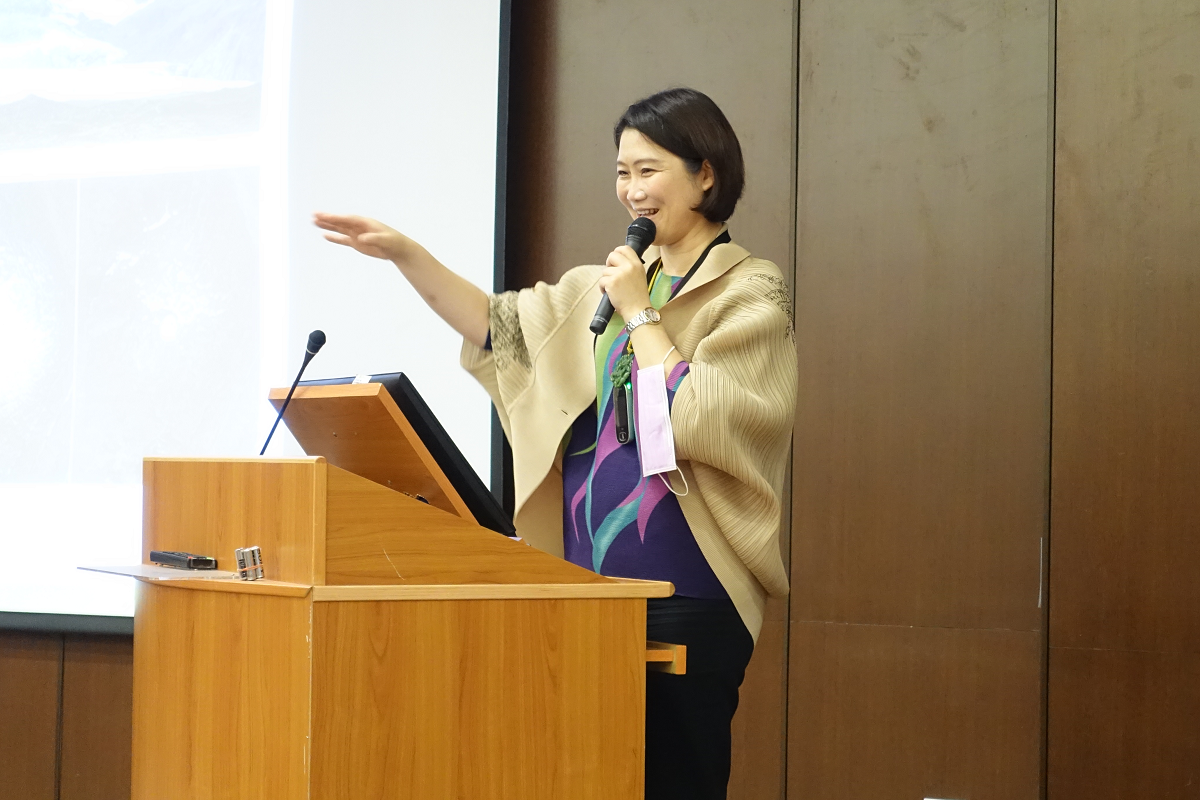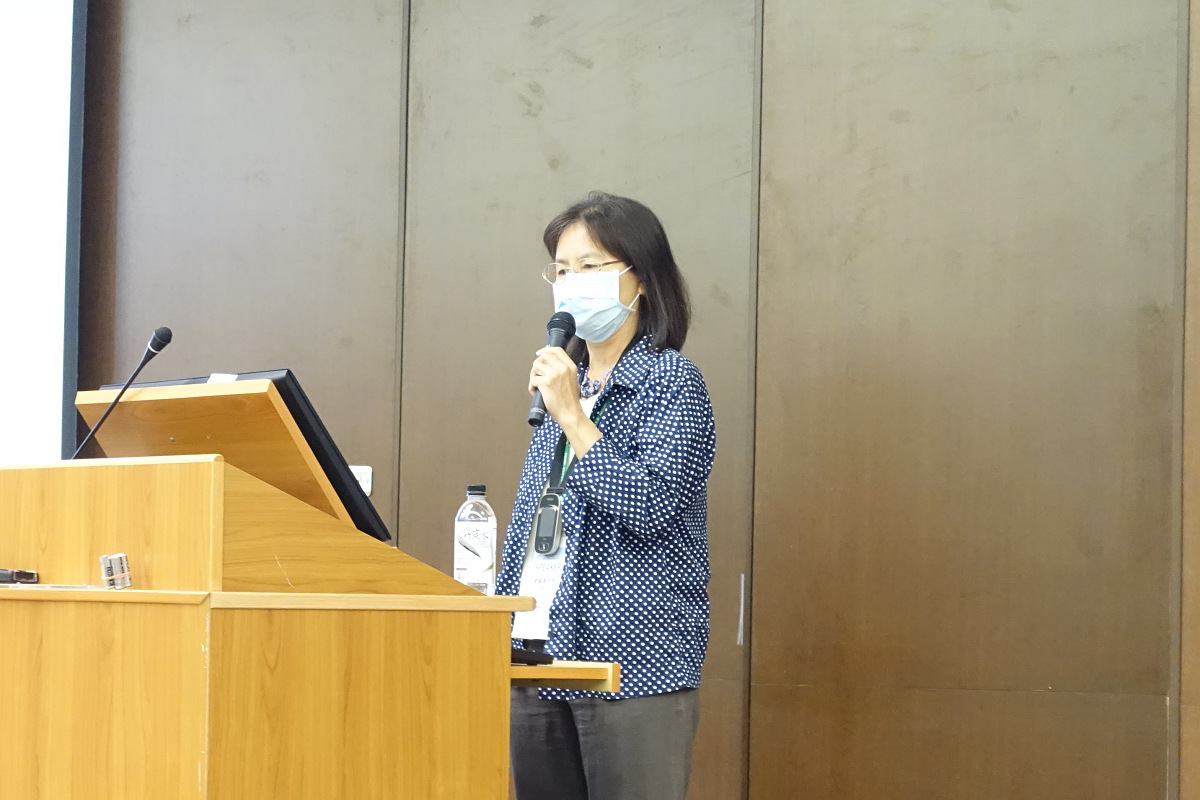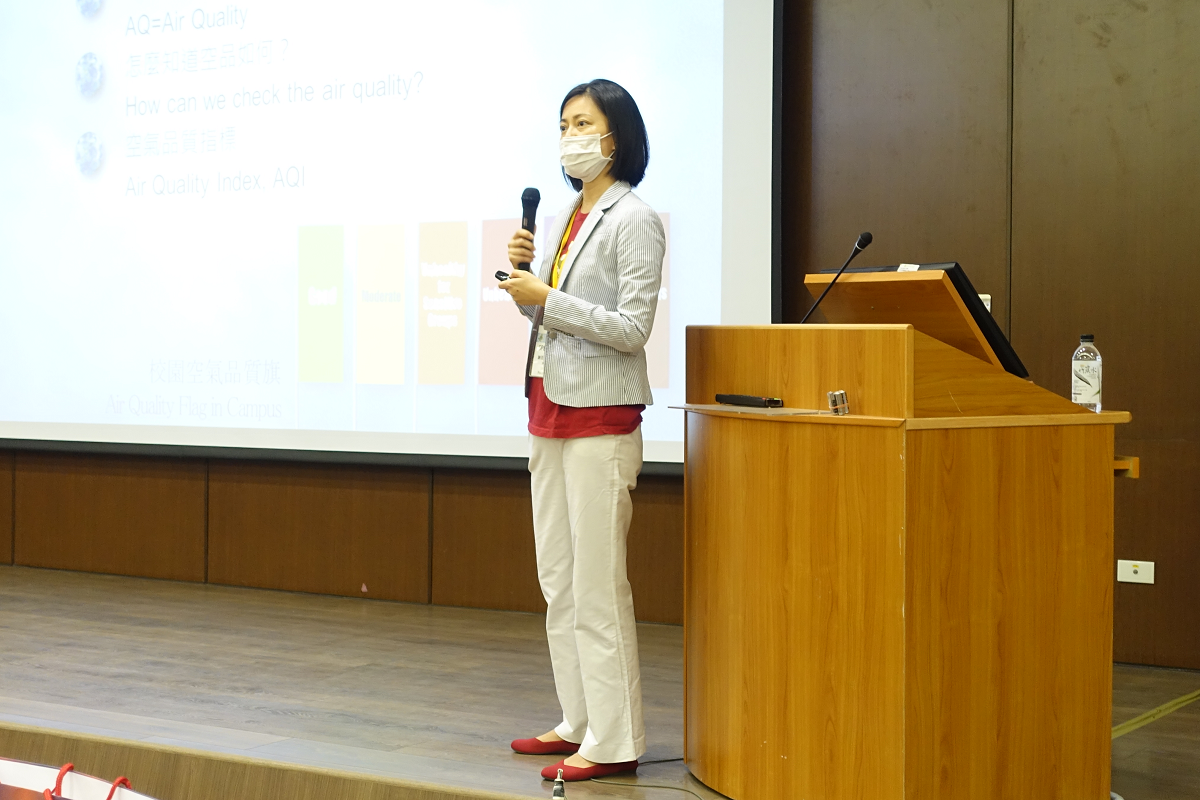Kaohsiung American School students join Aerosol International Co-Learning Day at NSYSU











2021-04-01
Dust from China’s worst sandstorm in decades is now also affecting the air quality in Taiwan, with the air quality level (AQI) index turning orange – “unhealthy for sensitive groups” and red – “unhealthy”. Air pollution has become a major problem, seriously jeopardizing the living environment, air quality, and health. To promote knowledge about air pollution and its relationship with climate change and on the way to respond to environmental hazards, Aerosol Science Research Center (ASRC) at NSYSU organized the Aerosol International Co-Learning Day in English, invited a group of nearly a hundred ninth-grade students from Kaohsiung American School (KAS). The event included lectures, game time, and visits to laboratories on campus related to aerosol science to raise students’ awareness of environmental issues.
It has been confirmed that air pollution and its harmful PM2.5 particles have become a threat to the health and safety of human beings, causing respiratory, cardiovascular, neurodegenerative diseases. Moreover, aerosols have a huge mitigating impact on climate change, as they affect the cloud formation dynamics, absorb and scatter solar radiation, and influence photochemical processes, said Associate Professor Chia C. Wang, Director of ASRC. She explained to the students that rising temperatures, air pollution, extreme weather, and airborne diseases are all interconnected and have a tremendous impact on our planet and health.
ASRC was established in February 2017, as the first and only center of this kind in Asia, committed to fundamental research on PM2.5, development of new strategies, and technologies for the reduction, regulation and removal of PM2.5, biomedical research on PM2.5-associated diseases, promoting environmental science education in the field of aerosol science, and studying the correlation between aerosols and the atmosphere, ocean, and environmental ecosystem. “We have been collaborating with partners overseas and in Taiwan, such as Taiwan International Ports Corporation and China Steel Corporation, to help them reduce their emissions and improve the well-being of all species to live in a cleaner world,” said Professor Wang.
Director Wang said that the ASRC has succeeded in developing and collecting advanced aerosol sensors unique in Taiwan and even in the whole of Asia, such as VUV Aerosol Photoelectron Spectroscopy, Time-Resolved Fourier Transform Infrared Spectrometer, Raman optical tweezers, and lidar remote sensing device. The students of KAS visited four laboratories on campus related to aerosol science, including the Aerosol and Biomedical Science Lab, Spectroscopy and Microscopy Lab, Organic Optoelectronic Lab, and the ASRC laboratory to understand how selected aerosol sensor function, such as aerosol lidar and automatic monitor e-bam PM2.5, that measure the particulate matter in the air. For most KAS students, it was the first opportunity to see such advanced technologies. KAS student Loran Meehan appreciated the opportunity to learn about hydrogen science and see the equipment designed for aerosol measurement for the first time. He also recognized the importance of sustainability in aerosols management for climate balance and human health.
Particulates in the air also penetrate the ocean and affect marine biota, however, these impacts are still poorly understood. Professor Li-Lian Liu of the Department of Oceanography, NSYSU, explained how the changing components of the atmosphere affect the ocean: the increasing levels of carbon dioxide make oceans warmer, more acidic and with less oxygen, which leads to a series of problems, such as coral bleaching, poor growth of shelled animals, or appearance of toxic algae. Professor Liu introduced the results of years-long research she conducted with Distinguished Chair Professor Chen-Tung Arthur Chen. Professors Liu and Chen were the first scientists to prove that in a wild environment, marine organisms can incorporate and accumulate fossil-fuel source PM1 released from anthropogenic activities, and pass it on to their juveniles by maternal transfer. They found concentrations of fossil-fuel source PM1 in sea anemones inhabiting marine environments ranging from the intertidal zone to a depth of 1 km; spots of different colors are visible with the naked eye if the concentration of PM1 is high.
Reduction of the dependency on fossil fuels, alleviation of global warming and environmental problems, as well as the development of clean and renewable energy sources have become important research topics. Hydrogen is a sustainable carrier of energy with considerable potential to replace fossil fuels, only releasing water as a by-product. However, there are a few challenges to the hydrogen economy, especially in storage and transport. Assistant Professor Cheng-Chau Chiu of the Department of Chemistry, NSYSU, together with his research team, discovered that the photoelectrocatalytic reaction on the surface of BiVO4 (bismuth vanadate) turns glycerol – a by-product of the biodiesel industry, into dihydroxyacetone – a product with high economic value, not only making the biodiesel industry – a sustainable source of energy, more profitable, but also, obtaining hydrogen in the process, when water molecules in the aqueous glycerol solution break down.
With the help of student ambassadors and under the guidance of Paichi Pat Shein, Director of the Education Promotion Division, ASRC, and Professor of the Institute of Education, KAS students played an educational board game – “Protecting Gaia: A Battle for Better Air Quality”, launched by ASRC. The players play the roles of People, Government, and Air Pollution Monster and try to improve or worsen the air quality. The game, the lectures, and the visit to laboratories helped the students build up awareness of the problem of air pollution and showed them how to take action to protect the Earth. “It is important to study aerosol science because air pollution is a global problem,” said Nana Chen, a student of KAS. The visit of KAS students to NSYSU also included a campus visit led by student ambassadors for them to experience one full day at NSYSU and understand the University’s strengths.
Dust from China’s worst sandstorm in decades is now also affecting the air quality in Taiwan, with the air quality level (AQI) index turning orange – “unhealthy for sensitive groups” and red – “unhealthy”. Air pollution has become a major problem, seriously jeopardizing the living environment, air quality, and health. To promote knowledge about air pollution and its relationship with climate change and on the way to respond to environmental hazards, Aerosol Science Research Center (ASRC) at NSYSU organized the Aerosol International Co-Learning Day in English, invited a group of nearly a hundred ninth-grade students from Kaohsiung American School (KAS). The event included lectures, game time, and visits to laboratories on campus related to aerosol science to raise students’ awareness of environmental issues.
It has been confirmed that air pollution and its harmful PM2.5 particles have become a threat to the health and safety of human beings, causing respiratory, cardiovascular, neurodegenerative diseases. Moreover, aerosols have a huge mitigating impact on climate change, as they affect the cloud formation dynamics, absorb and scatter solar radiation, and influence photochemical processes, said Associate Professor Chia C. Wang, Director of ASRC. She explained to the students that rising temperatures, air pollution, extreme weather, and airborne diseases are all interconnected and have a tremendous impact on our planet and health.
ASRC was established in February 2017, as the first and only center of this kind in Asia, committed to fundamental research on PM2.5, development of new strategies, and technologies for the reduction, regulation and removal of PM2.5, biomedical research on PM2.5-associated diseases, promoting environmental science education in the field of aerosol science, and studying the correlation between aerosols and the atmosphere, ocean, and environmental ecosystem. “We have been collaborating with partners overseas and in Taiwan, such as Taiwan International Ports Corporation and China Steel Corporation, to help them reduce their emissions and improve the well-being of all species to live in a cleaner world,” said Professor Wang.
Director Wang said that the ASRC has succeeded in developing and collecting advanced aerosol sensors unique in Taiwan and even in the whole of Asia, such as VUV Aerosol Photoelectron Spectroscopy, Time-Resolved Fourier Transform Infrared Spectrometer, Raman optical tweezers, and lidar remote sensing device. The students of KAS visited four laboratories on campus related to aerosol science, including the Aerosol and Biomedical Science Lab, Spectroscopy and Microscopy Lab, Organic Optoelectronic Lab, and the ASRC laboratory to understand how selected aerosol sensor function, such as aerosol lidar and automatic monitor e-bam PM2.5, that measure the particulate matter in the air. For most KAS students, it was the first opportunity to see such advanced technologies. KAS student Loran Meehan appreciated the opportunity to learn about hydrogen science and see the equipment designed for aerosol measurement for the first time. He also recognized the importance of sustainability in aerosols management for climate balance and human health.
Particulates in the air also penetrate the ocean and affect marine biota, however, these impacts are still poorly understood. Professor Li-Lian Liu of the Department of Oceanography, NSYSU, explained how the changing components of the atmosphere affect the ocean: the increasing levels of carbon dioxide make oceans warmer, more acidic and with less oxygen, which leads to a series of problems, such as coral bleaching, poor growth of shelled animals, or appearance of toxic algae. Professor Liu introduced the results of years-long research she conducted with Distinguished Chair Professor Chen-Tung Arthur Chen. Professors Liu and Chen were the first scientists to prove that in a wild environment, marine organisms can incorporate and accumulate fossil-fuel source PM1 released from anthropogenic activities, and pass it on to their juveniles by maternal transfer. They found concentrations of fossil-fuel source PM1 in sea anemones inhabiting marine environments ranging from the intertidal zone to a depth of 1 km; spots of different colors are visible with the naked eye if the concentration of PM1 is high.
Reduction of the dependency on fossil fuels, alleviation of global warming and environmental problems, as well as the development of clean and renewable energy sources have become important research topics. Hydrogen is a sustainable carrier of energy with considerable potential to replace fossil fuels, only releasing water as a by-product. However, there are a few challenges to the hydrogen economy, especially in storage and transport. Assistant Professor Cheng-Chau Chiu of the Department of Chemistry, NSYSU, together with his research team, discovered that the photoelectrocatalytic reaction on the surface of BiVO4 (bismuth vanadate) turns glycerol – a by-product of the biodiesel industry, into dihydroxyacetone – a product with high economic value, not only making the biodiesel industry – a sustainable source of energy, more profitable, but also, obtaining hydrogen in the process, when water molecules in the aqueous glycerol solution break down.
With the help of student ambassadors and under the guidance of Paichi Pat Shein, Director of the Education Promotion Division, ASRC, and Professor of the Institute of Education, KAS students played an educational board game – “Protecting Gaia: A Battle for Better Air Quality”, launched by ASRC. The players play the roles of People, Government, and Air Pollution Monster and try to improve or worsen the air quality. The game, the lectures, and the visit to laboratories helped the students build up awareness of the problem of air pollution and showed them how to take action to protect the Earth. “It is important to study aerosol science because air pollution is a global problem,” said Nana Chen, a student of KAS. The visit of KAS students to NSYSU also included a campus visit led by student ambassadors for them to experience one full day at NSYSU and understand the University’s strengths.
Click Num:
Share
